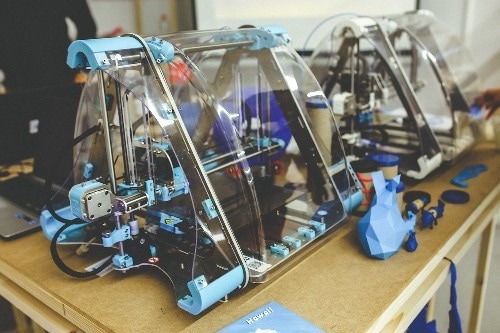Reviewed by Lexie CornerApr 23 2024
In a study published in the journal Waves in Random and Complex Media, researchers at the University of Bristol developed a formula that can be used to determine the design boundaries for a specific component’s geometry and microstructure.

3D printer. Image Credit: University of Bristol
There is currently no commercially feasible sensing technique or imaging method for assessing the quality of such components. If additive manufacturing (3D Printing) of metallic components can meet industry safety and quality requirements, there could be considerable commercial advantages in the manufacturing sector.
The main breakthrough is the use of ultrasonic array sensors, which are basically the same as those used in medical imaging to create images of babies in the womb. However, in these new laser-based versions, the sensor would not need to come in contact with the material.
There is a potential sensing method using a laser based ultrasonic array and we are using mathematical modeling to inform the design of this equipment ahead of its in situ deployment.
Anthony Mulholland, Study Author and Head, School of Engineering Maths and Technology, University of Bristol
The group developed a mathematical model that incorporated the mechanics of ultrasonic waves traveling through additively created layered metallic material, accounting for the variation that occurs between each manufactured component.
The nature of the specific material and the design factors related to the ultrasonic laser combine to generate the mathematical formula. The output is a measure of how much information will be supplied by the sensor to enable the mechanical integrity of the component to be examined. To maximize this information content, one can then adjust the input parameters.
Their findings are envisaged to speed up the design and implementation of the proposed solution to this manufacturing opportunity.
“We can then work with our industry partners to produce a means of assessing the mechanical integrity of these safety-critical components at the manufacturing stage. This could then lead to radically new designs (by taking full advantage of 3D printing), quicker and more cost-effective production processes, and significant commercial and economic advantage to UK manufacturing,” added Mulholland.
The team intends to utilize the findings to assist their experimental collaborators in designing and manufacturing laser-based ultrasonic arrays.
These sensors will subsequently be placed in situ using robotic arms in a controlled additive manufacturing environment. They will maximize the information content in the sensor's data and develop unique imaging algorithms to provide tomographic images of the interior of components supplied by industry partners. Destructive measures will subsequently be used to evaluate the quality of the tomographic images.
“Opening up 3D printing in the manufacture of safety-critical components, such as those found in the aerospace industry, would provide a significant commercial advantage to the UK industry. The lack of a means of assessing the mechanical integrity of such components is the major blockage in taking this exciting opportunity forward. This study has built a mathematical model that simulates the use of a new laser-based sensor that could provide the solution to this problem, and this study will accelerate the sensor’s design and deployment,” Mulholland concluded.